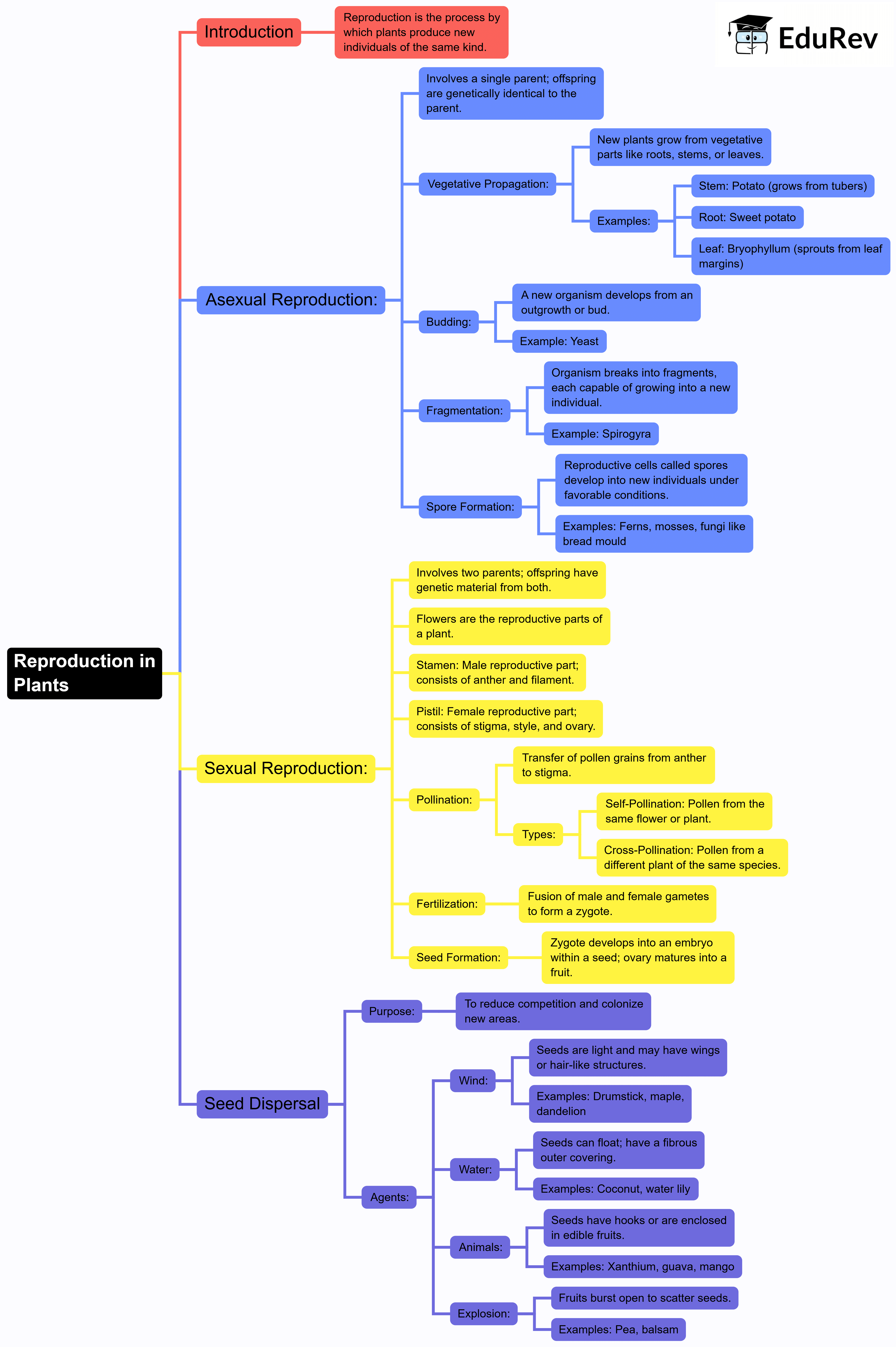Class 7 Exam > Class 7 Notes > Science Class 7 (Old NCERT) > Mind Map: Reproduction in Plants
Mind Map: Reproduction in Plants | Science Class 7 (Old NCERT) PDF Download

The document Mind Map: Reproduction in Plants | Science Class 7 (Old NCERT) is a part of the Class 7 Course Science Class 7 (Old NCERT).
All you need of Class 7 at this link: Class 7
|
111 videos|435 docs|28 tests
|
FAQs on Mind Map: Reproduction in Plants - Science Class 7 (Old NCERT)
| 1. What are the main types of reproduction in plants? |  |
Ans. The main types of reproduction in plants are sexual and asexual reproduction. Sexual reproduction involves the fusion of male and female gametes, resulting in seeds, while asexual reproduction occurs without the formation of seeds and includes methods like budding, fragmentation, and vegetative propagation.
| 2. How do flowering plants reproduce sexually? |  |
Ans. Flowering plants reproduce sexually through a process that involves pollination, fertilization, and seed formation. Pollination occurs when pollen from the male anther is transferred to the female stigma. After successful pollination, fertilization takes place when sperm cells unite with the egg cells in the ovule, leading to the development of seeds.
| 3. What is vegetative propagation in plants? |  |
Ans. Vegetative propagation is a form of asexual reproduction in plants where new individuals are produced from the vegetative parts such as stems, roots, or leaves. This method allows plants to reproduce without seeds, and common techniques include cuttings, layering, and division.
| 4. What role do pollinators play in plant reproduction? |  |
Ans. Pollinators, such as bees, butterflies, and birds, play a crucial role in plant reproduction by transferring pollen from the male anthers to the female stigmas of flowers. This process increases the likelihood of fertilization and seed production, helping to maintain biodiversity and ecosystem health.
| 5. How can environmental factors affect plant reproduction? |  |
Ans. Environmental factors such as temperature, light, water availability, and soil quality can significantly impact plant reproduction. For instance, inadequate sunlight can reduce flowering, while extreme temperatures can affect pollen viability and seed development, ultimately influencing a plant's reproductive success.
Related Searches





















